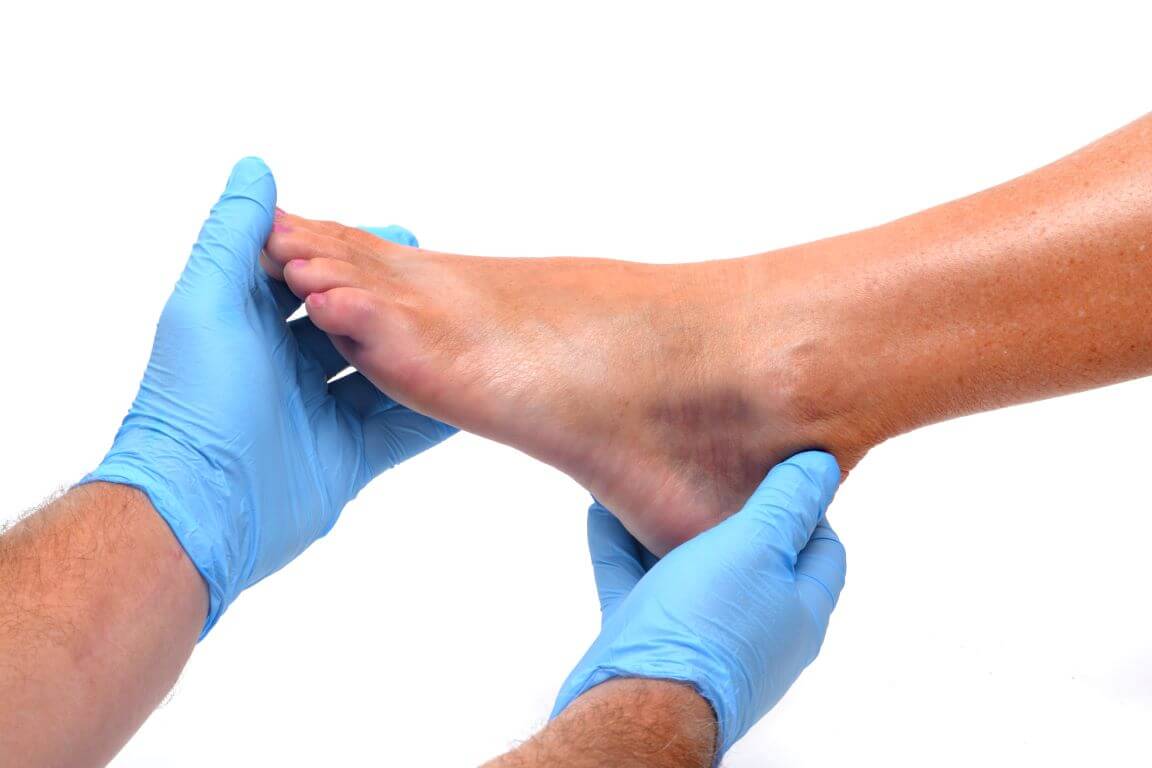Many people know the ways that diabetes affects the general health and well-being of those who receive this diagnosis, but few are aware of the ways it impacts the skin. According to Dr. Sam Awan of U.S. Dermatology Partners in McKinney, Texas, “Those who suffer from diabetes are much more prone to skin health issues than many of them know. It’s important to develop a good relationship with a dermatologist after a diabetes diagnosis to ensure you can maintain good skin health and avoid some of the more serious skin conditions related to diabetes.” In this blog, Dr. Awan explains some of the most common diabetes-related skin conditions you should be on the lookout for.
Acanthosis Nigricans
Acanthosis nigricans typically occurs in the creases of the body. In this condition, patients develop a darkening and subtle thickening of the skin, most commonly on the back of the neck, armpits, and groin. This skin condition is a common symptom of insulin resistance that accompanies prediabetes and type 2 diabetes, especially in patients who are classified as overweight or obese. Dermatologists can prescribe topical retinoids or use ammonium lactate for acanthosis nigricans, but controlling blood glucose levels remains the best form of treatment.
Bullosis Diabeticorum
Bullosis diabeticorum is the clinical term for diabetic blisters. Patients who develop this condition can look like they have burn blisters on their skin in areas that have not been exposed to excessive heat or chemicals that cause blisters. These blisters typically develop on the extremities (arms, hands, legs, and feet). The blisters look frightening, but bullosis diabeticorum is usually painless and will heal on its own. While anyone with diabetes may develop this skin condition, it is more common in men and those who have neuropathy and other diabetes complications.
Diabetic Dermopathy
Diabetic dermopathy is often referred to simply as shin spots because the main symptom is dark red or brown spots that develop on the fronts of the legs (shins). It’s most common in older patients and those who have had diabetes for ten years or longer. This skin condition is painless and harmless. Dr. Awan says, “People with diabetes can experience changes in their blood vessels and the way blood flows through the body. This reduces the blood flow to the skin, resulting in darkening patches on the skin. Patients may be misdiagnosed as having sunspots or other types of lesions that can be dangerous, but diabetic dermopathy is not dangerous. It typically doesn’t require treatment of any kind.”
Digital Sclerosis
Digital sclerosis is a condition that impacts the finger joints of people with type 1 diabetes who have poorly managed blood sugar levels. Dr. Awan says, “The definition of digital sclerosis is found in its name. Digital refers to the fingers or digits. Sclerosis is an abnormal hardening of body tissue. Digital sclerosis is characterized by the hardening of the finger joints caused by the skin becoming thick, tight, and waxy, which limits the range of movement in the fingers. While it starts in the hands, digital sclerosis can spread to other parts of the body.”
Dry Skin
When it comes to dry skin, Dr. Awan says, “Anyone can develop dry skin during the winter months or due to lack of adequate moisturization, and some have dry skin naturally. Diabetics are one group of people who suffer from dry skin more often than normal.” It is thought that persistently elevated blood glucose levels can draw fluid out of the skin cells and into the bloodstream, potentially leading to skin dehydration. Dr. Awan recommends all diabetics moisturize regularly: “Even if you feel as though your skin hasn’t become dry yet, the best time to start moisturizing is as soon after diagnosis as possible. I recommend trying several different over-the-counter moisturizers until you find a consistency you like and develop the habit of moisturizing after every shower.”
Eruptive Xanthomatosis
Eruptive xanthomatosis is a rare skin condition related to diabetes. It’s associated with having high cholesterol and triglyceride levels in the bloodstream. Eruptive xanthomatosis leads to bumps on the arms, hands, legs, feet, and buttocks. These reddish or yellow bumps can be itchy or uncomfortable, but they are generally harmless.
Infection
Bacterial and fungal skin infections are very common for diabetes patients. Dr. Awan says, “While anyone can develop a bacterial or fungal infection, those who have diabetes are significantly more likely to experience these infections, especially severe skin infections. High blood sugar levels and excess glucose allow bacteria and fungi to reproduce and spread rapidly. For this reason, it’s essential for patients with diabetes to diagnose and begin treating these infections as soon as possible. Bacterial infections typically cause the skin to become red, swollen, inflamed, hot, and painful to the touch. Fungal infections tend to cause itchy skin, and they may also lead to rashes or blisters. If you notice signs of either a bacterial or fungal skin infection, let your dermatologist and physician know right away.”
Necrobiosis Lipoidica
Necrobiosis lipoidica starts out looking like small pimples. It leads to patches of skin that appear yellow, red, or brown in color. The discolored skin is often swollen or hardened. Necrobiosis lipoidica is very rare, but for those who do develop this condition, it can be extremely painful and cause intensely itchy skin. While this can occur in non-diabetic patients, it’s classically seen in the setting of diabetes. The underlying cause of this condition isn’t completely clear, but it seems to develop when there are changes to the composition of fat or collagen beneath the skin. When it comes to treatment, Dr. Awan says, “Unfortunately, there’s no known cure for necrobiosis lipoidica, and treatment can be difficult. We focus on symptom management, using topical creams and other medications and treatments as recommended by your dermatologist or physician.”
Treatment for Diabetes-Related Skin Conditions
According to Dr. Awan, “The most important treatment step patients can take to improve their skin health is to make sure their diabetes is well managed. The best skin treatments from your dermatologist will not deliver lasting results if your diabetes isn’t well-managed. In conjunction with diabetes management from your primary care physician, your dermatologist will help you to improve skin condition symptoms, so you are healthy and comfortable.”
Want to Chat with a Dermatologist About Diabetes Skincare?
If you have received a diabetes diagnosis from your primary care physician and think you may have one of these skin conditions, don’t hesitate to reach out to the U.S. Dermatology Partners team to schedule an exam right away. U.S. Dermatology Partners routinely works in conjunction with primary care physicians to help co-manage many conditions that affect the skin, including diabetes. It’s simple to get started. You’ll just need to take a few moments to complete our online scheduling request form. Once our local dermatology team receives your request, they’ll reach out to finalize the details of your appointment.
Find a location near me
or


